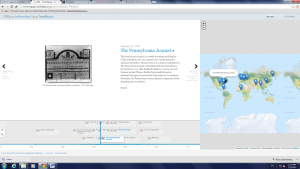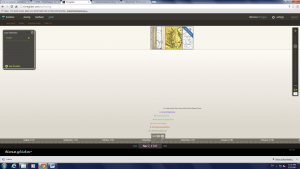As Grafton said “graphic representation is among our most important tools for organizing information.” (Grafton, p. 10), time maps and timelines are quite helpful for the study of history. These tools for organizing historical events match “our mental furniture” (Grafton, p. 10) which shows our favor on visual forms. Chronology organizes information in a pattern. It is always with time and events in order or images with time on it.

As technology developed, we now have computers with more advanced chronological tools. Timemapper, for example, turns time and location in the information into visual images. Instead of using chart, we put events on a straight line in time order, which can better show more specific time sequence and time distance between each other. We can also trace the event to the map, by which we can find the space distance between different events. By comparing events happened in different time and space, we can find out more things that have not mentioned in the texts—the hidden relationship of different events. By finding similarities of time and space and events, which can be easily seen on Timemapper, we can connect different events and tell a story—an event can be the cause of the next event or the effect of an earlier event.
“The timeline offered a new way of visualizing history” (Grafton , p. 20), Timeglider gives a good example for this. Timeglider compacts pages of  information into short titles in order which would be more clear and easier to understand. It is interesting that it organizes titles into “stairs” in order. In Payne’s Travel Journal, for example, we can figure out the route Payne and his partners traveled. We can also figure out the time they spend on different place simplely by seeing different distance between different titles. Titles that are close to the same vertical line show that Payne and his partners arrived in one place and quickly moved to another. Knowing this can help us find out the place where they spent more time staying in and that place would probably be an important place in which important events happened.
information into short titles in order which would be more clear and easier to understand. It is interesting that it organizes titles into “stairs” in order. In Payne’s Travel Journal, for example, we can figure out the route Payne and his partners traveled. We can also figure out the time they spend on different place simplely by seeing different distance between different titles. Titles that are close to the same vertical line show that Payne and his partners arrived in one place and quickly moved to another. Knowing this can help us find out the place where they spent more time staying in and that place would probably be an important place in which important events happened.
Leave a Reply